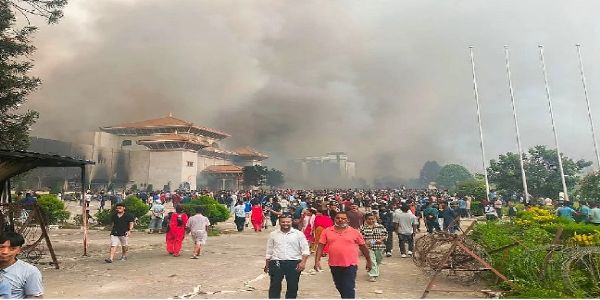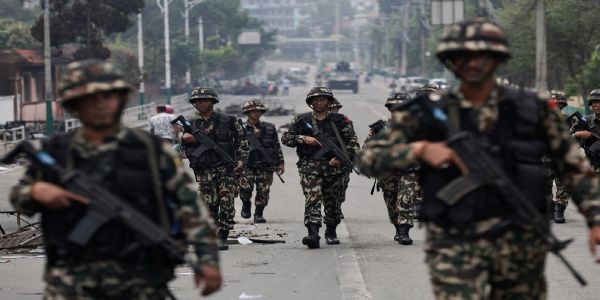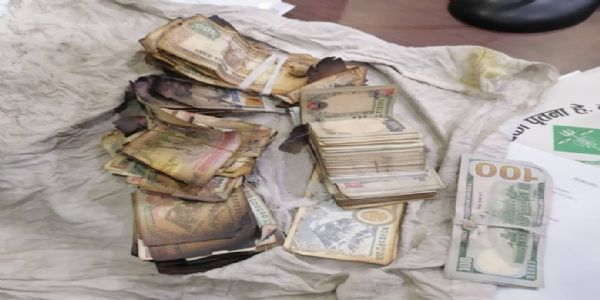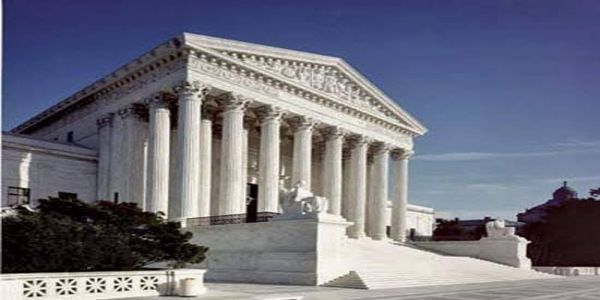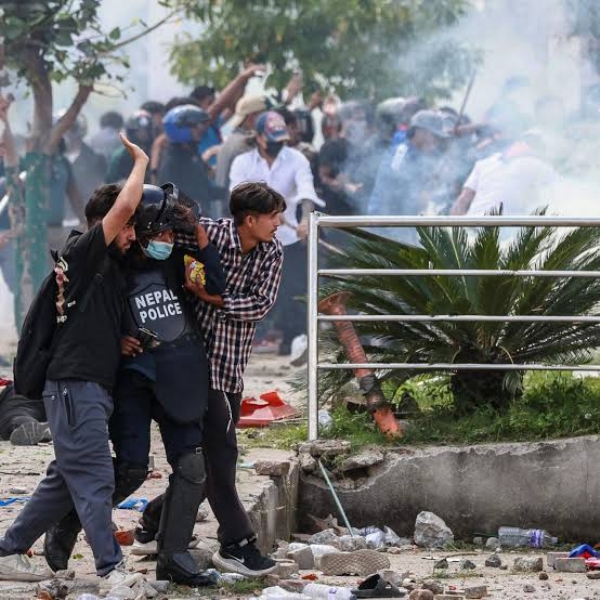
Kathmandu, 10 September (H.S.):
Nepal plunged into unprecedented political chaos as Prime Minister K P Sharma Oli resigned on September 9, 2025, following violent protests led predominantly by Generation Z students and youth. Sparked initially by a government ban on 26 major social media platforms including Facebook, WhatsApp, Instagram, X, and YouTube, the unrest quickly escalated into a nationwide movement condemning alleged political corruption, nepotism, and government misgovernance.
The protests erupted after the September 4 social media ban, which was cited by authorities as non-compliance with registration rules but widely perceived as an attempt to silence dissent. The youth-led movement—remarkably leaderless but massively coordinated online—mobilized tens of thousands in Kathmandu and across Nepal by September 8. Demonstrators, many dressed in school uniforms, gathered around key sites such as Maitighar Mandala and the Federal Parliament Complex. The movement adopted symbolic flags like the Straw Hat Pirates’ Jolly Roger, reflecting its youthful and unorthodox character.
Security forces responded with tear gas, water cannons, rubber bullets, and live ammunition in several incidents, leading to at least 19 confirmed deaths and over 300 injuries. The situation worsened on September 9 as protesters stormed and set fire to several government buildings, including the Parliament, Supreme Court, and Singha Durbar, the executive secretariat. Residences of prominent political leaders—including Prime Minister Oli’s own residence, those of President Ram Chandra Poudel, former prime ministers Sher Bahadur Deuba, and Pushpa Kamal Dahal—were attacked or burned.
The Tribhuvan International Airport was closed amid the chaos, with Indian carriers IndiGo and Air India suspending flights due to security concerns. The Indian Ministry of External Affairs advised Indian nationals in Nepal to shelve travel plans and remain indoors, while Indian security forces put the India-Nepal border on high alert given the unrest spilling over.
Oli’s Resignation and Aftermath
In a letter to President Paudel, Oli said he resigned to facilitate a constitutional and political solution amid extraordinary circumstances. His resignation followed intense nationwide anger, especially among young protesters demanding accountability, freedom of expression, and an end to entrenched political corruption. Despite stepping down, Oli was asked to continue in a caretaker capacity until a new arrangement is made.
Nepal Army Takes Command
With security deteriorating, the Nepal Army took control of key locations including the Tribhuvan International Airport and Singha Durbar on the evening of September 9. The army warned against continued violence and vowed to mobilize all security mechanisms if unrest persisted. In a statement, senior army officials called for peace, urging citizens and protesters alike to maintain national unity and social harmony while pledging to protect lives and property.
Role of Balendra Shah (Balen Shah)
A significant figure emerging from the protests is Kathmandu’s Mayor, Balendra Shah, popularly known as Balen Shah. An engineer and former rapper, Balen has become the symbolic leader and favorite among Gen Z protesters. He acknowledged the protests as a true youth movement and called for restraint and peaceful dialogue following Oli's resignation. Many see him as a potential political alternative or interim leader poised to steer Nepal toward reform.
The protests reflect deep-rooted frustrations with systemic corruption, youth unemployment exceeding 20%, and economic stagnation despite remittance-driven growth. The Gen Z movement’s demands extend beyond lifting the social media ban to include political accountability, transparency, and modernization of Nepal’s governance. The crisis also holds regional significance due to Nepal’s geopolitical location and recent close ties of Oli’s government with China. India remains watchful and proactive in securing its border and safeguarding its nationals.
---------------
Hindusthan Samachar / Jun Sarkar





